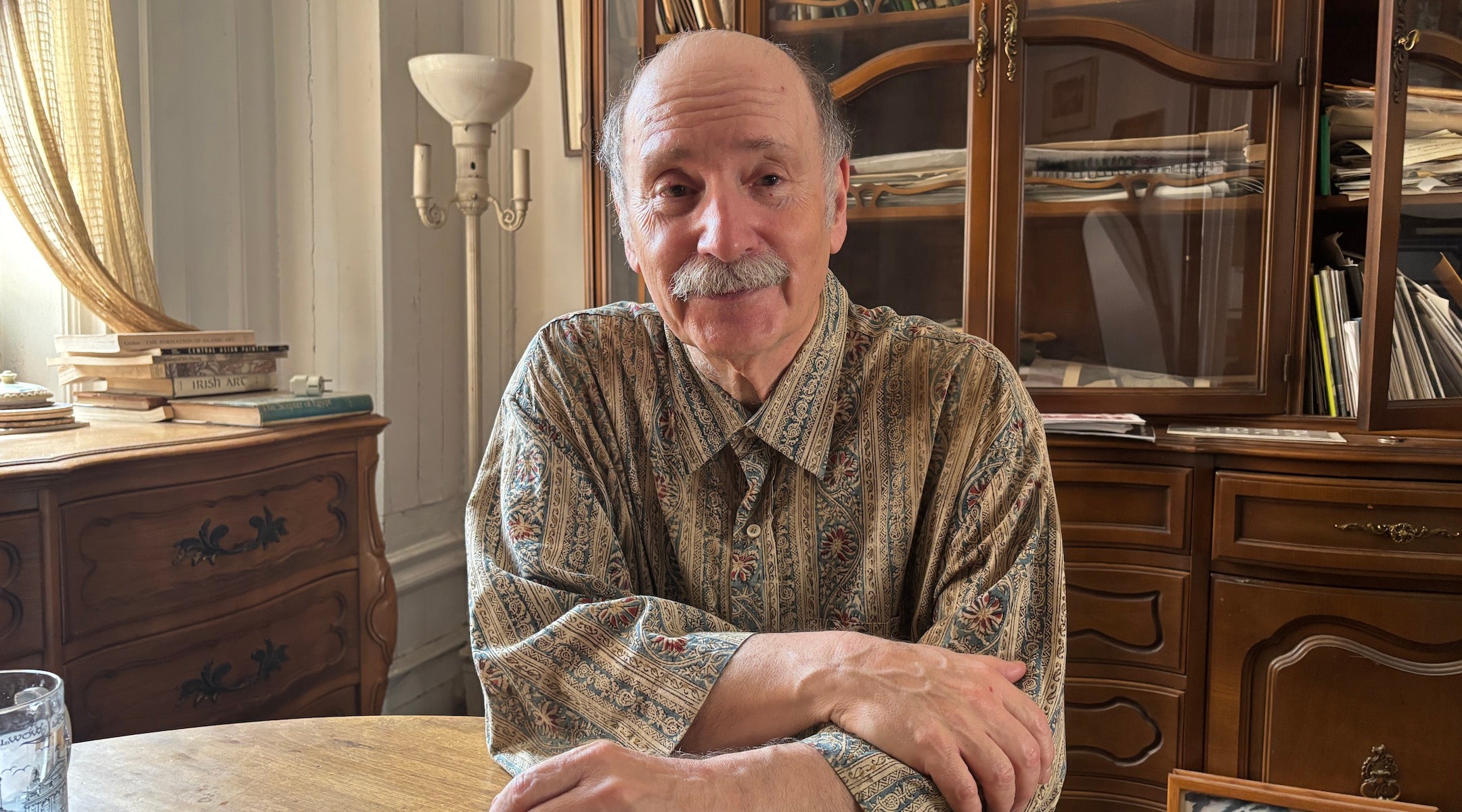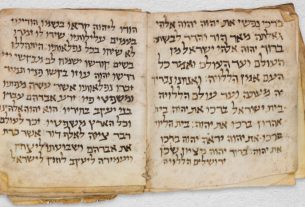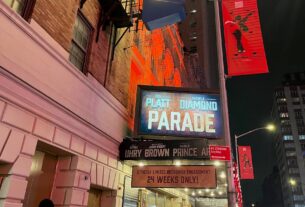Walter Zev Feldman, 76, is an authority on Ottoman Turkish music, Yiddish dance and klezmer music. An accomplished musician and a respected academic who has taught at elite universities, Feldman was a key player in the 1970s klezmer revival — and, in fact, it was Feldman who popularized the term “klezmer” to describe the traditional instrumental music of East European Jews.
“Klezmer was still an obscure term of the Yiddish lexicon,” Feldman writes in his new memoir, “From the Bronx to the Bosphorus: Klezmer and Other Displaced Musics of New York.”
That was in 1978, when he received a National Endowment for the Arts grant to produce a historic concert featuring clarinetist and bandleader Dave Tarras. The concert, titled “Jewish Klezmer Music,” took place in the East Village, at Casa Galicia — today’s Webster Hall — and it was the first klezmer music concert in NYC in some 25 years.
Feldman’s new book is both an ethnomusicological treatise and an account of his role in the klezmer revival, in which musicians from adjacent folk traditions played both traditional Jewish instrumental music and melded it with everything from rock to bluegrass. The book describes the musical journey Feldman, who is known as Zev, began as a high school student who enjoyed exploring a range of Middle Eastern music. From there, he eventually got his Ph.D. in Central Asian Literature from Columbia University; later, he collaborated with celebrated klezmer clarinetist Andy Statman, which resulted in an album and several concerts.
Today, klezmer music is played in almost every major American city by local bands, and all over Europe as well. Perhaps the best known modern klezmer revival band, the Grammy Award-winning Klezmatics, is currently celebrating its 40th anniversary.
While klezmer music plays a key role in “From the Bronx to the Bosphorus,” the book’s overarching theme is multicultural. Ultimately, Feldman’s exploration of the musical diasporas in New York City showed him how the traditional music of Greece, Albania, Hungary, Romania, Ukraine, Turkey and Armenia are interconnected.
Feldman, who was born and raised in the Bronx by Jewish immigrant parents, was drawn to music — and international music, in particular — at a young age. His particular interest in Greek and Turkish music may have been inherited from his father, who loved the sounds of the region. Meshilim Feldman grew up in the shtetl of Edinets, which was in Bessarabia (now Moldova) when it was ruled by the Turks. The village had “a musical symbiosis linking Ashkenazic Jews, local Roma, Moldovans, Turks, Tatars and Greeks,” as Feldman writes.
Feldman’s latest book, “From the Bronx to the Bosphorous: Klezmer and Other Displaced Musics of New York.” (Courtesy Fordham University Press)
“It’s hard to explain, but I was drawn to this Turkish-Greek environment, as well as to the Yiddish,” Feldman told the New York Jewish Week in a recent interview in his book-filled home on the Upper West Side. “There was a clear sense that the aesthetic of the Greeks, of the Armenians, too, of the Turks, to some extent, fit with our Yiddish aesthetic better than many of the neighboring peoples.”
While he was a teenager in the 1960s, Feldman started going to the Chelsea section of Manhattan, where a strip of Eighth Avenue below West 30th Street was known as Greek Town. Greek night clubs featured belly dancers accompanied by what he describes in the book as “mostly mediocre” music played at an “earsplitting volume.” Soon enough, Feldman was playing his darabukka, a ceramic drum more commonly known as a dumbek, at these clubs; he had taken up the instrument after frequenting a Middle Eastern music venue in the East Village.
“From the Bronx to the Bosphorus” reveals Feldman’s openness to other cultures, which began as a student at the co-ed Akiba Hebrew Academy, which eventually merged with two other schools to become Riverdale’s SAR Academy. There, a classmate invited him to check out services at the neighborhood’s Sephardic Jewish Center.
“The melodies of this synagogue were utterly strange to me,” Feldman writes. “Many chants seemed to hang somewhere in space, never returning to what I could hear as a final tone… This Sabbath service afforded me several hours to accustom myself to the exotic musical surroundings. I sensed something bright and optimistic — the gratitude and dignity of strong and satisfied people giving thanks to a power that governed their lives and helped them to thrive.”
Later, as a student at Music and Art High School, another classmate suggested he check out the art at St. Spyridon Greek Orthodox Church in Washington Heights. Feldman, a visual arts student, was impressed with the church’s art, but was equally taken by the music there.
“This was the finest cantorial singing I had yet heard in person,” Feldman writes. He became a frequent visitor to St. Spyridon and went as far as joining the church’s midnight Easter procession, carrying a little candle.
Feldman also belonged to the Zionist socialist youth group Hashomer Hatzair. He and some friends from the group went to Club Khayyam, a Middle Eastern music venue in the East Village, where he connected with a musician from Iran who played a hammered dulcimer known as a santur.
“The first time I heard Persian music, it just blew me away,” Feldman said.
Among the colorful characters that Feldman collaborated with over the years: a Jewish belly dancer in Aspen, Colorado, whom he accompanied while smoking opium and hashish throughout the winter of 1975; a Jew from Dagestan named Zebulon who had the ability to dance on two toes; and Antranik Aroustamian, a virtuoso on an ancient fiddle known as a kemanche. Aroustamian had performed for both Joseph Stalin and the Shah of Iran before emigrating to the United States. In 1976, Feldman accompanied Aroustamian in a concert for the Shah’s sister at the Iranian Embassy in Washington, D.C.
The last two chapters of the book are devoted to Statman and Tarras.
After meeting at a concert in which Statman dazzled the audience with his bluegrass mandolin chops, Feldman and Statman started playing tunes from the British Isles, the Balkans and Greece. Feldman, on the hammer dulcimer known as a cimbalom, accompanied Statman’s mandolin. The duo appeared at a 1977 concert at Columbia University with a Greek folk music ensemble called Paliparea and apparently created quite a frenzy.
Later, in October, 1978, Feldman and Statman were on hand as Tarras performed as part of a trio of old-timers at Casa Galicia. Some 400 people had to be turned away from the groundbreaking event. After the concert the trio continued to perform for throngs of people who took to the ballroom floor to dance.
“That floor was just bouncing underneath people,” recalled Ethel Raim, who co-wrote the application for the NEA grant with Feldman. “People would come in and say, ‘Oh, he [Tarras] played at our parents’ wedding,’ or ‘He played at our wedding.’”
Jewish wedding musicians in Eastern Europe were known as klezmorim, and played dance music and ballads, usually without vocals, on fiddles, the cimbalon, the occasional wooden flute and, by the early 1800s, the clarinet. The music fell out of fashion among the Jewish immigrants eager to assimilate after arriving in America, and the Holocaust silenced the culture in Yiddish-speaking Europe.
Though there had been some fledgling interest in klezmer music in the U.S. by the time of the Casa Galicia concert — a band called The Klezmorim started playing in Berkeley, California, about three years prior, and The Chutzpah Yiddish Orchestra was playing in Los Angeles in 1977, according to member Michael Alpert — Feldman writes the Tarras concert should be seen as the beginning of the klezmer revival.
“We need to remember that the klezmer profession had been hereditary,” Feldman explained in an email. “In the U.S. members of klezmer lineages settled in New York and in Philadelphia. Rarely anywhere else; certainly not in California. So the kind of personal learning through initiation that I describe both for myself and for Statman did not occur in the West. Hence the revitalization occurred first in New York and spread from there.”
In the ensuing years, klezmer bands started popping up all over the country, including the Klezmer Conservatory Band, the Mazeltones and Margot Leverett & the Klezmer Mountain Boys. Feldman writes that he and Statman were surprised by the “astonishing rapidity” of klezmer’s growth during this period. Feldman viewed the genre’s increased popularity as a positive development, though he disparages the vocalists who incorporated Yiddish theater songs and other sources into their repertoire.
“For Andy and I, that was already treyf,” he said. “It was not really klezmer music. It’s a subversion of what the meaning of a klezmer was.”
Statman, for his part, considers Feldman “a Renaissance man.” The celebrated clarinetist called Feldman “a very sensitive musician, with a great understanding of how music should be played, regardless of the style.”
Feldman’s formal academic career, which stretched more than 30 years, included stints at Princeton, the University of Pennsylvania and NYU Abu Dhabi, appears to have come to an end. These days, Feldman is an academic advisor to the Klezmer Institute, a non-profit that coordinates crowd-sourced efforts to share more than 800 klezmer tunes culled from musical manuscripts obtained from the Vernadsky National Library of Ukraine. Feldman continues to teach Yiddish dance, which he’ll be doing at Yiddish Summer Weimar in Germany later this summer.
He and his wife, the ethnomusicologist Judit Frigyesi, divide their time between New York and Budapest.
The chapter on the klezmer revival in Feldman’s book concludes with an anecdote on one of the most memorable Jewish weddings he and Statman played. At a synagogue in the Gramercy Park section of Manhattan one of the guests approached Feldman and exclaimed, “I haven’t heard such freylekhs [lively dance tunes] since I came to this country!”
The man had been a partisan who fought the Nazis. After telling Feldman how they had killed the Germans, the man said the partisans would run back to the forest and dance freylekhs.
“Hearing this tale,” Feldman writes, “my own catharsis and liberation were complete!”
Jewish stories matter, and so does your support.




